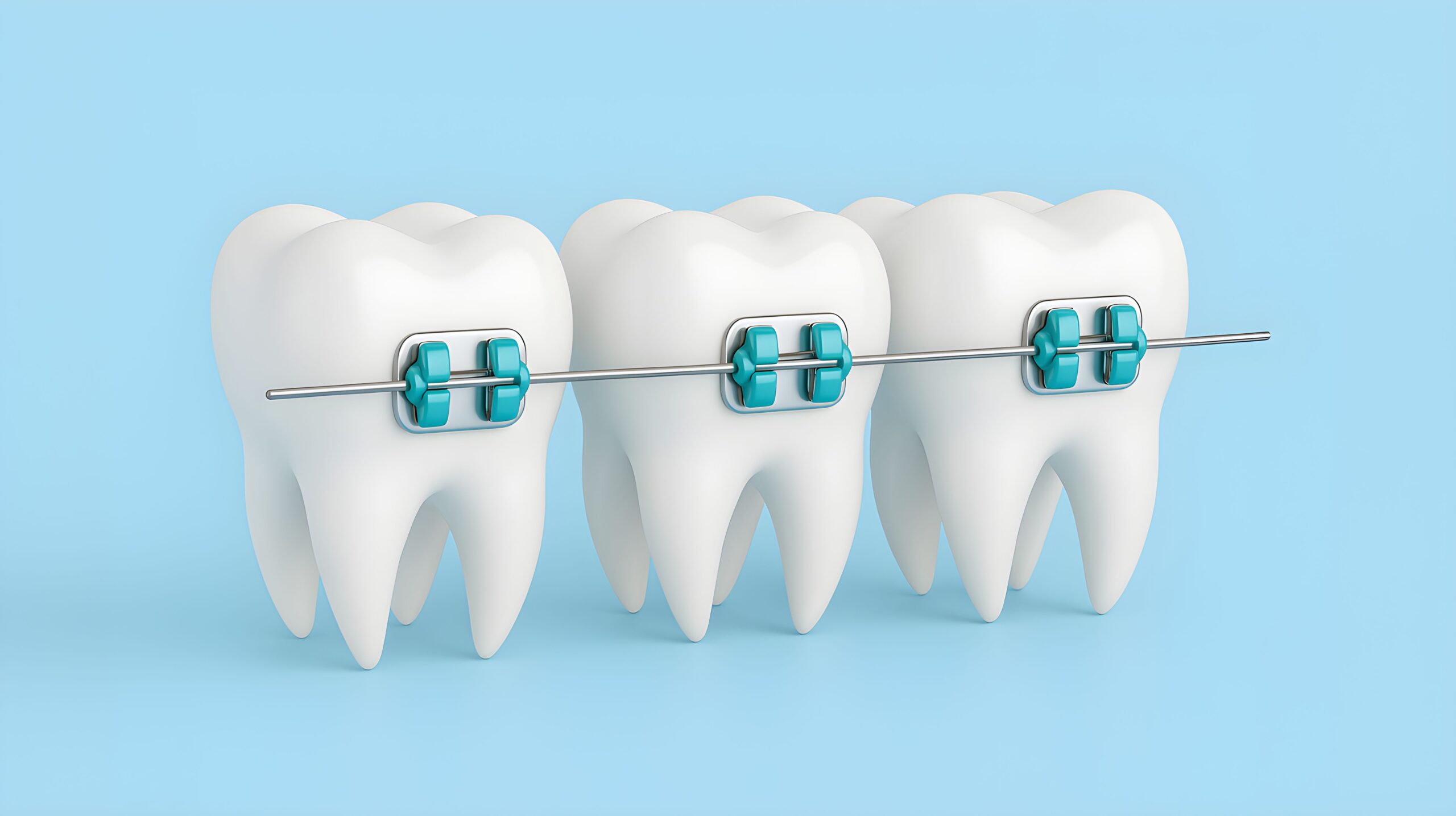Gaps between your teeth, also known as diastema, are a common dental issue that can influence your smile’s aesthetics and overall oral health.
While some people embrace diastema as a unique characteristic, others may feel less confident about their smile. Beyond appearance, these gaps can have important implications for your dental health if left untreated.
What Causes Gaps Between Teeth?
Understanding what leads to diastema is essential for determining the best course of action.
Here are some key factors that might contribute to gaps in your teeth:
- Teeth and Jaw Size
A mismatch between your jaw and the size of your teeth can cause gaps. A larger jaw or smaller teeth often leads to spacing issues, which may run in families.
- Extra-tooth or abnormal growth
An extra-tooth or an abnormal growth can occur in the bone between the roots of teeth, causing a gap between the teeth.
- Labial Frenum
An oversized or low-positioned labial frenum (tissue connecting the upper lip to gums) can keep front teeth apart, making gaps harder to close without treatment.
- Baby Teeth
Gaps between baby teeth are normal, as they allow room for permanent teeth. Professional evaluation may be needed if gaps persist after adult teeth come in.
- Thumb Sucking and Tongue Thrusting
Early habits such as tongue thrusting or thumb sucking can push front teeth outward, creating gaps over time.
- Swallowing Patterns
Tongue thrusting during swallowing can push front teeth apart, leading to diastema. This often requires professional correction.
- Tooth Loss
Missing teeth from injury, decay, or gum disease can create gaps, with neighbouring teeth shifting into the space over time.
- Bad Habits
Bad habits such as nail-biting or chewing on hard objects can stress teeth, contributing to gaps and other dental damage.
Who Does Diastema Affect?
While anyone can develop gaps between teeth, certain factors may increase your risk. These include:
- Genetics: If diastema runs in your family, you may be more likely to experience it.
- Age: Gaps are more common in children and tend to close as their permanent teeth come in. However, they can also occur or persist in adults.
- Ethnicity: Certain populations, such as Black individuals, are more likely to have diastema compared to others.
How is Diastema Identified?
Dentists can typically identify diastema during a routine check-up. No special tests are needed to confirm it.
How Gaps Between Your Teeth Can Affect Your Oral Health
While some people might see gaps as purely cosmetic issues, diastema can have real consequences for your dental health. Here’s how:
- Plaque Build-Up: Gaps provide extra space for food particles and plaque accumulation. Without proper cleaning, this can increase your risk of cavities and gum disease.
- Bite Issues: Gaps can lead to misalignment, which may cause difficulty chewing or even jaw pain over time.
- Shifting Teeth: Left untreated, gaps can cause neighbouring teeth to move out of place, leading to further alignment issues.
- Speech Problems: Larger gaps, such as diastema, can affect speech clarity, making it harder to pronounce certain sounds like “s” and “z.”
- Chewing Challenges: Misaligned teeth caused by gaps can make chewing less efficient and more difficult.
- Gum Health Risks: Gaps can trap food particles, increasing the risk of gum disease with symptoms like redness, swelling, and bleeding.
- Jaw Pain: Improper alignment from gaps may lead to bite issues, which can cause discomfort or pain in the jaw over time.
Diastema isn’t always a problem. For some, it’s purely cosmetic and poses no oral health risks.
How to Fix Gaps in Teeth
If you feel self-conscious about the gaps between your teeth, the good news is that there are several effective ways to address them. Professional orthodontists can help you fix spaces between teeth through various treatments, such as braces or Invisalign aligners. These methods gradually move teeth into the desired position, closing gaps and improving overall alignment. The right treatment will depend on the cause and size of the gap, also known as diastema.
From orthodontics to cosmetic fixes, here are some popular options to consider:
Cosmetic Solutions for Gaps
- Dental Bonding: A quick, cost-effective option using tooth-coloured resin to fill small gaps and blend with natural teeth—ideal for minor adjustments.
- Porcelain Veneers: Thin, custom-made shells attach to the front of teeth, creating a polished, gap-free smile. Durable and perfect for a uniform look.
- Orthodontics: Braces or clear aligners like Invisalign gradually close larger gaps, improving appearance and function.
- Frenectomy: A minor surgery to correct gaps caused by a thick labial frenum, often paired with bonding or veneers for best results.
- Bridges or Implants: Replace missing teeth with a bridge or implant to restore function and appearance, with implants offering a permanent solution.
If you’re unsure which orthodontic option is best for you, consider booking a free consultation with PacificWest Dental‘s orthodontists. During this consultation, you’ll receive personalized advice and treatment recommendations tailored to your specific needs.
When Gum Health is a Factor
If gum disease contributes to your diastema, addressing the underlying infection is essential before pursuing cosmetic treatments. Healthy gums are the foundation of a strong, beautiful smile.
Common gum treatments include:
- Deep Cleaning (Scaling and Root Planing): This procedure eliminates bacteria and plaque below the gum line, helping heal mild gum disease and prevent further issues.
- Gum Surgery: For advanced cases, flap surgery allows for a thorough cleaning of affected areas and can include bone grafts to restore lost tissue.
Is Diastema Preventable?
If diastema is genetic, there’s no way to prevent it—it’s simply a trait passed down through your family. However, diastema caused by gum disease or bad habits can be minimized. Maintaining optimal oral hygiene, brushing and flossing on a consistent basis, and attending routine dental cleanings can help protect your gums and teeth. See your dentist as soon as possible if you spot early signs of gum issues, such as swelling or bleeding.
What Should I Know If I Have Diastema?
For most people, diastema is not a health concern at all. Unless caused by a condition like gum disease, it doesn’t harm oral health. Many even consider the gap between their teeth a unique and beautiful feature. But if you’d prefer to close the gap, several cosmetic options are available, such as braces, bonding, or veneers.
Does Diastema Worsen Over Time?
In a healthy mouth, the size of a gap typically stays the same. However, if you notice your diastema widening, it may signal gum issues or shifting teeth. It’s best to consult professional orthodontists to rule out underlying problems like gum disease.
Should You Be Concerned?
Diastema, or tooth gaps, can be a personal choice or a sign of dental issues. While small gaps often don’t need treatment, severe spacing or problems linked to gum disease might. Modern solutions like orthodontics, bonding, or veneers can address appearance and function. At PacificWest Dental, we focus on healthy habits and early treatment to protect your smile. Unsure if your diastema needs attention? Visit us to explore the best options for your needs!

Hello! I’m Dr. Kevin Lee, a certified orthodontic specialist at PacificWest Dental Group, proudly serving the vibrant communities of Vancouver and Surrey. My journey into orthodontics began back in high school. As a teenager wearing braces, I became fascinated by the intricate blend of art, engineering, and biology that defines this field. This early experience ignited a passion that has guided me throughout my career.
I pursued my academic journey at the University of British Columbia (UBC), where I earned a Bachelor of Science in Biochemistry in 2006, followed by a Doctor of Dental Medicine in 2011. After a year-long residency at Montefiore Medical Center in New York, I returned to UBC to complete a combined Master of Science in Craniofacial Biology and a Diploma in Orthodontics in 2015. That same year, I achieved certification from both the Royal College of Dentists of Canada and the American Board of Orthodontics.
With over a decade of clinical experience, I remain deeply committed to staying at the forefront of orthodontic advancements. At PacificWest Dental Group, we prioritize personalized treatment plans tailored to each patient’s unique needs, ensuring comfort and care every step of the way. Our goal is to help you achieve the smile you’ve always dreamed of in a welcoming and supportive environment.
Outside the clinic, I enjoy engaging with our community and staying active. Whether it’s through local events or outdoor activities, I believe in building strong relationships both inside and outside the office. I look forward to meeting you and working together to create a beautiful, confident smile.
Services we provide:
-Invisalign
-Braces
-Lingual Braces
-Digital treatment planning
-TMJ and headpain treatment
-Laser Therapy
-Sleep Apnea Oral Appliance
-Dysport Cosmetic Injectables










